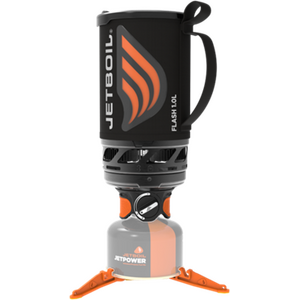
How to choose a camping stove
Na powietrzu, Trekking, How to choose -guides by Varuste.net, 10.7.2024
There are as many different camping stoves as there are campers. Which product should you choose as your first stove? To support your choice, here is some information on different stove types with the most popular stove models:
Mounted on top of a gas canister
The stoves that are mounted on top of a gas canister are the most compact way to cook, and even this category includes many kinds of models. The most lightweight ones that even the most ultralight backpackers will accept are the very ascetic stoves that are screwed directly on top of the gas canister without any special conveniences. But what are the conveniences that one might hope for a gas burner? Gadgets, accessories, and other features add weight but also enhance comfort of use and efficiency. In addition to material choices, these nuances also contribute to the product's price:
Piezo push-button ignition is a nice feature: by pushing a button, you can strike a spark to the gas and quickly turn the burner on. If needed, the burner can also be turned on without the piezo, with normal matches, lighter or fire striker.
Regulator guarantees an even flow of gas regardless of the gas pressure and answers for the effective functioning of the device.
Wind shield (integrated) enhances the functioning of the burner and saves gas.
All-in-one solutions The most well-known of these comprehensive solutions is likely Jetboil. Based on extensive research, Jetboil has determined that the most important feature of a stove is its efficient heat transfer capability. To enhance this, Jetboil developed the Flux Ring® base for its pots, which distributes and stabilizes heat. Additionally, the pots can be fitted over the gas burner to provide excellent wind protection. This is a very interesting concept, and similar heat-distributing bases have been seen in camping pots from other manufacturers as well.

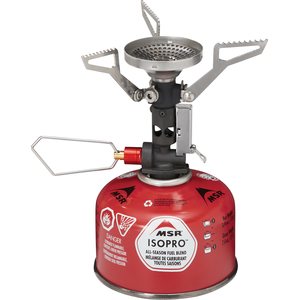
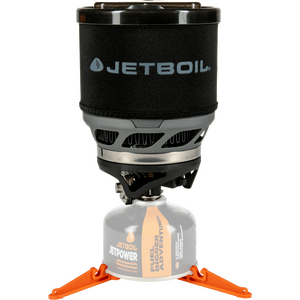
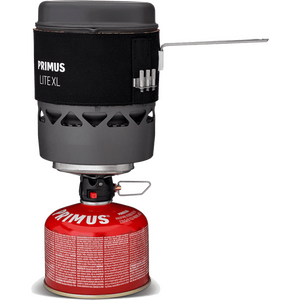
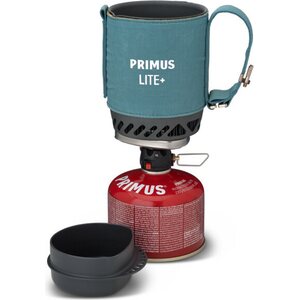
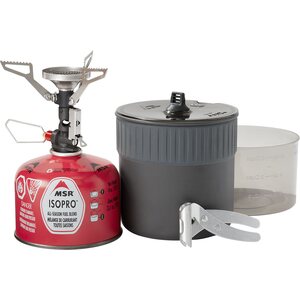
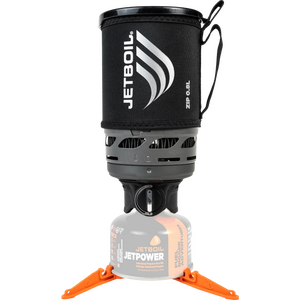
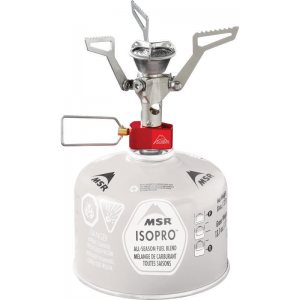
Gas stoves with a hose
In the gas stoves with a hose, there is the same idea as in the above-mentioned, on-top-of-a-canister model – except for a few fundamental differences. Sure, the elements, parts and add-ons are the same, but thinking of the use, a stove with a hose is far more steady because when cooking a bigger set of food, you will place a kettle or a pan into a horizontal position on top of the stove part, and you don’t have to balance a pan full of food on top of a gas canister. In addition, this kind of configuration enables refilling the gas canister upside down.
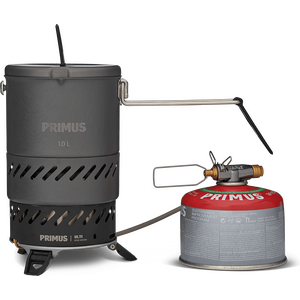
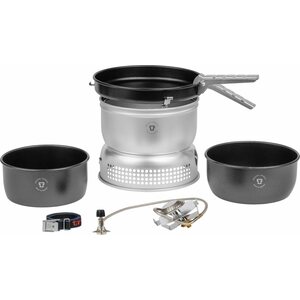
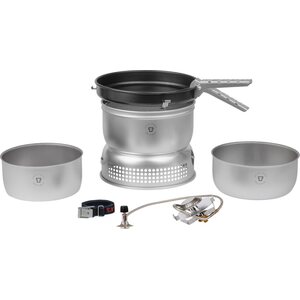
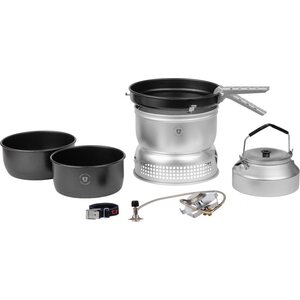
Multi-fuel stoves
The idea of the multi-fuel stoves is that you can use different fuels with an efficient burner for one reason or another: in the alpine areas, a compressed air standard pressure container is quite a weird idea. On the other hand, you cannot bring a compressed gas container on a plane, for example, and not to mention that there might not be a local, well-equipped Varuste.net in the destination country to offer camping gas to the expedition. You can find petrol and diesel just about anywhere and with a proper fuel bottle and pump, many kinds of liquids can be turned into burning gas. In the burner, the possible new nozzles include a mention stating which one goes with which fuel (gas, petrol, diesel, fuel oil, etc.). In addition to the above-mentioned “restrictions”, coldness is one of the things that restrain functioning of basic camping gas. Almost all multi-fuel stoves can also be used with traditional camping gas canisters when conditions allow.
For typical multi-fuel stoves, you correspondingly cannot use liquid fuels that contain alcohol such as spirit (Marinol, Sinol, etc.)
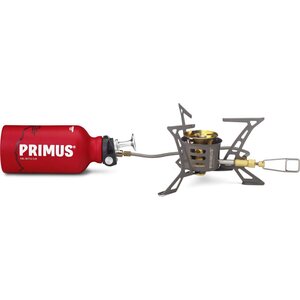
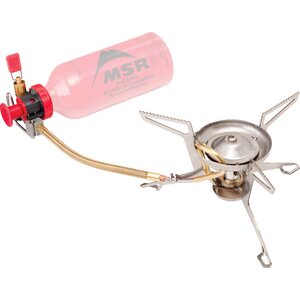
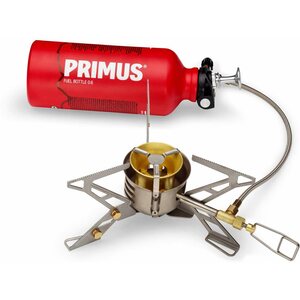

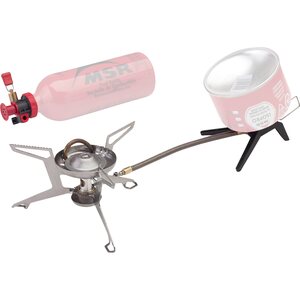
Liquid fuel stoves
The best-known liquid fuel stove is probably the Swedish Trangia. The classic burner is one kind of a vessel that consists of a fuel cup of about 5 cl, a possible preheater, and the cap and the control valve of the fuel vessel. With a cup of fuel, you can cook for about 10-15 minutes in summer conditions, which means that longer cooking sessions require that you fill the cup a few times. NOTE: For safety reasons, when you add the spirit fuel, make sure that the flame has died for sure, and that the canister has cooled down.
You can use many kinds of alcohol fuels in the burner, but hydrocarbon fuels (paraffin, petrol, diesel, and other fuel oils of that kind) are not suitable in the raw. The brand names of the best-known spirits are probably Sinol and Marinol, of which the latter burns easily cleaner (not so much soot) but is naturally more expensive than Sinol.
The simple structure of the burner makes it reliable even in hard conditions, and suitable fuels are available almost everywhere in the world. On the other hand, the weakness is, compared to gas stoves for example, the modest effectivity. For example, there is available a gas burner with a hose especially for Trangia that makes the stove considerably more versatile.
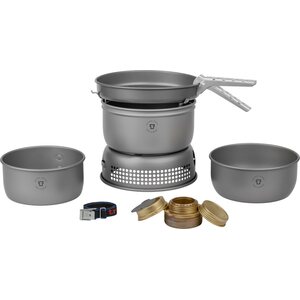
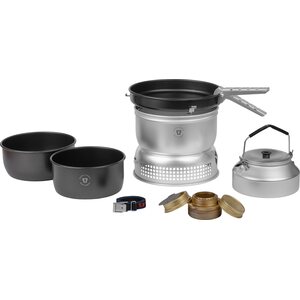
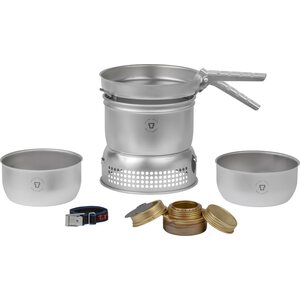

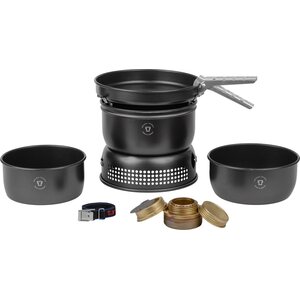
Twig stoves
As a twig stove fuel, you can use cones, branches, dry grass, etc. Once you get a proper fire burning in the stove, you can also use for example wet cones as a fuel. There are many kinds of twig stoves – the lightest and the most compact ones are boxes made of light metal, to be put together with plates, inside of which you make a little fire of the above-mentioned material. The little fire made in this metal box will then warm up water or whatever you want to cook above the stove.
Among the compact box models, the most notable ones are Happy, Grumpy and Big Bad Stoves of Savotta, as well as Bushcraft models, which include wide range of stoves, starting from very minimal ones.
Next level twig stoves are the ones that focus on utilizing fire gases or otherwise keeping the warmth inside and reducing the effect of the wind. The idea of the legendary Irish Kelly Kettle is to have a bottle-like form with a hollow inside. The hollow inside of the stove serves as a flue. There is a water container in the jacket of the stove. On the bottom of the stove, there is a detachable cup that serves as a fire chest. The stove is primarily designed for boiling water, but there are accessory sets available that allow for a variety of cooking tasks (the stove can also be purchased as a package that includes these accessories).
The American Solo Stove twig stoves have small air holes at the bottom, allowing air to feed the fire for combustion. The double walls of the stoves create space for the heated air to flow upwards, enhancing the combustion process at the top of the stove. Thanks to their design, these wood-burning stoves produce very little smoke.
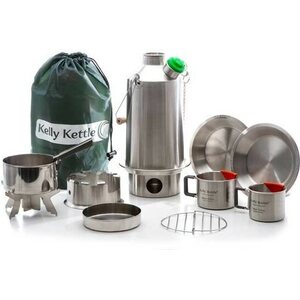
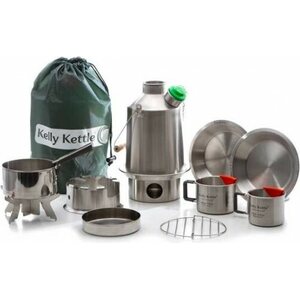
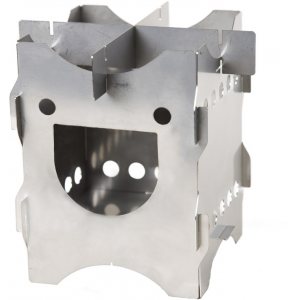
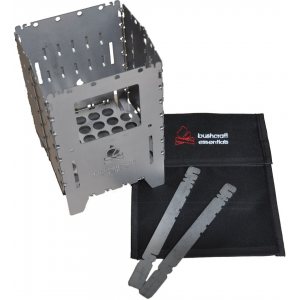
 oceny
oceny